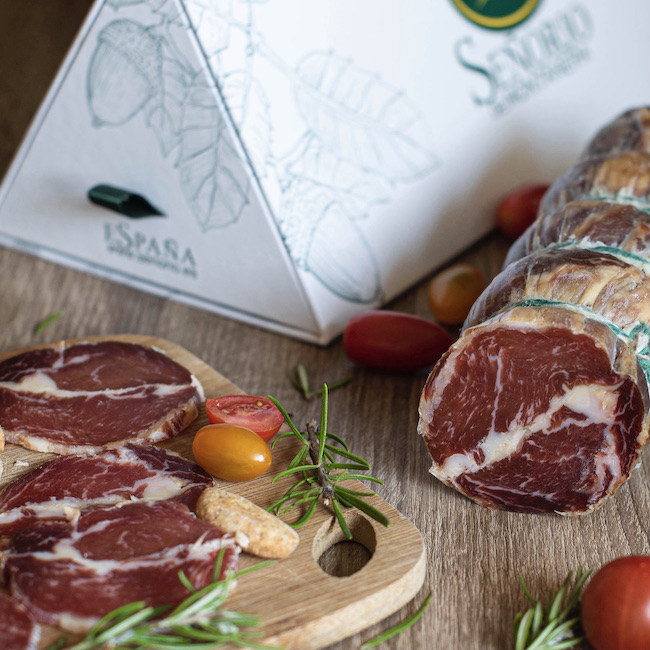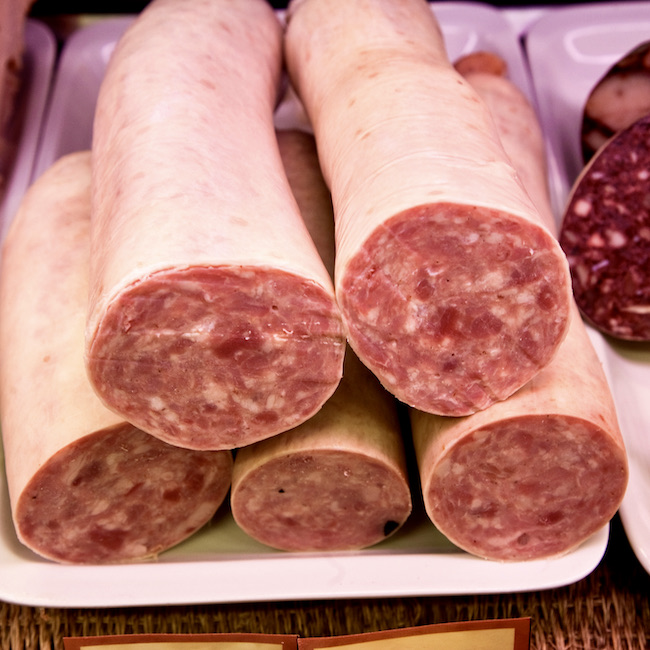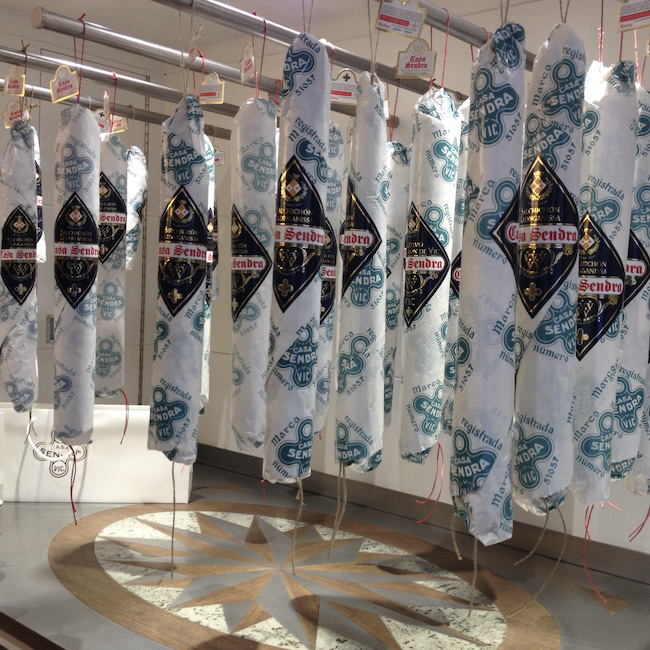by Graham Keeley - @grahamkeeley
.png.transform/rendition-xs/image_image%20(1).png)
Beyond well-known ‘chorizo’, Spain has an enormous variety of meat products which are the result of a mix of respect, tradition and the highest quality standards.

by Graham Keeley - @grahamkeeley
Francisco Espárrago toured villages in rural Spain to find out for himself about a recipe for a ham dish which was fast disappearing. He spoke to elderly women who had learnt from their own mothers how to make lomo doblado – which roughly translates as folded loin of pork. In many cases, their own children had moved away from the farms to make careers elsewhere, so the knowledge of how to make it was gradually dying out.
This traditional dish, lomo doblado was prepared mostly by women on farms south of Badajoz, in Extremadura. This arid corner of western Spain is home to the dehesa, or meadows, where thousands of pigs roam for years, feeding only on acorns, a diet which produces the finest ham, known as jamón Iberico de bellota.

Lomo doblado is made by cleaning the fresh meat of external fat then marinating it with salt and garlic. Unlike many other hams, it does not contain paprika. A day later, it is covered with a thin layer of lard from the pigs which grow up in this part of the world.
This artisanal process involves folding the meat in half, hence the name folded loin of ham. Then it is put into a plastic package and is bound with string so that the meat stays together and is especially juicy. It is left to mature for at least six months before it is fit to serve. It is sliced into thin strips and served cold.
Espárrago, the president of Señorío de Montanera, which exports high-quality Spanish jam products around the world, wanted to find out for himself how this dish was really made by hand.
“I believe lomo doblado goes back to the 18th century. It was mostly women on the farms who carried out the butchering and the preparing of the meat. So, I went to ask the old women how they did it.
Espárrago said he toured five villages and spoke to people on farms where the practice of how to make this embutido was fast becoming a lost craft.
“I spoke to one woman who was 90 but her daughter was a doctor, so the link had been lost and the knowledge was dying.”

A cornucopia of ‘embutidos’
Lomo doblado is just one of Spain’s many embutidos or sausage meats which are prepared with mostly pork but also chicken, beef and lamb.
Chorizo is perhaps the best-known embutido outside Spain which is popular as a tapas or as part of main dishes.
Many regions of Spain have their own variations on these signature meat dishes. Catalonia, in northeast Spain, boasts its own butifarra, a large spicy sausage, and fuet which is sliced into fine pieces.
Sobrasada is a famous sausage from the Balearic Islands prepared with paprika, salt, garlic and other spices. Androlla comes from Galicia in the northwest of the country.
Botillo is a speciality from the El Bierzo province of León in northern Spain, while morcilla is a blood sausage which can be made with pork but also chicken, lamb or beef. Chosco de Tineo comes from the village of same name (Tineo) in Asturias, on the Atlantic coast in northern Spain.
Salchichón is known as a summer sausage which is made by smoking, drying or cooking the meat. It is most often made with pork but is sometimes also produced from ox, veal or even horse meat.

Salchichón from Vic: tradition and success
Jamón is perhaps Spain’s best known meat product but in Britain chorizo is almost as popular. Lomo doblado is a sausage dish which is in demand in France and Belgium among other countries. The efforts of companies like Señorío de Montanera have helped to revive the popularity of this dish, particularly within Spain. One of this company’s biggest markets is in Catalonia, where embutidos like are popular because their fuet and butifarra are symbols of regional pride.
Casa Sendra, which is based in Vic, a city in Catalonia which is famous for embutidos, is one of Spain’s most renowned makers of salchichón. The company which started business in 1849 was taken over in 2014 by new buyers who had the utmost respect for the firm, likening it to one of the world’s most famous cars.
“When we were involved in buying the company we called it Operation Bentley,” said David García-Gassull, the owner and CEO of Casa Sendra. Popular in Spain, but also sold abroad, Casa Sendra’s salchichón is hand made in an elaborate process lasting up to 20 weeks.
Only female pigs are used because the sexual odour of the male may alter the taste of the product, Mr García-Gassull said. After the animal is slaughtered, its intestine is marinated with salt, red and white pepper for four days.
The meat is then manually stuffed in natural, double layer pig casings. At each end, it is linked with a hemp cord. Later, each piece of meat is ‘beaten’ to test if it comes up to standard in a process which requires expert knowledge.
“The meat is tested for imperfections by tapping it with the tip of the middle index finger. We listen. It is like listening to a bottle to see if it is empty or full. If there is a space it means that there is air or it has gas and it is near purification,” said Mr García-Gassull.
Salchichón from Casa Sendra is sold principally in Spain but there are small quantities exported to Britain, France, Belgium and Germany. Another example that embutidos from Spain are much more than chorizo.